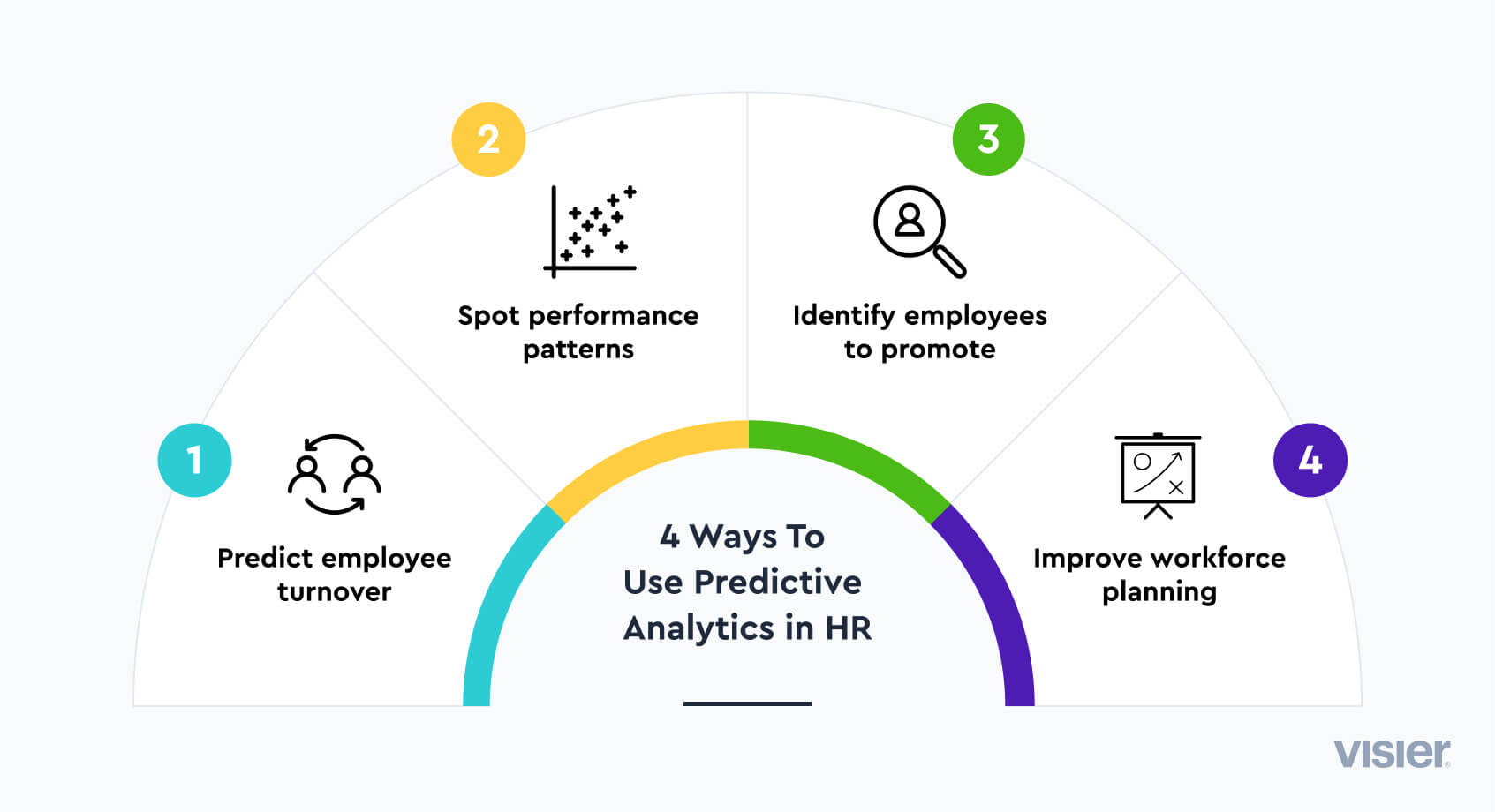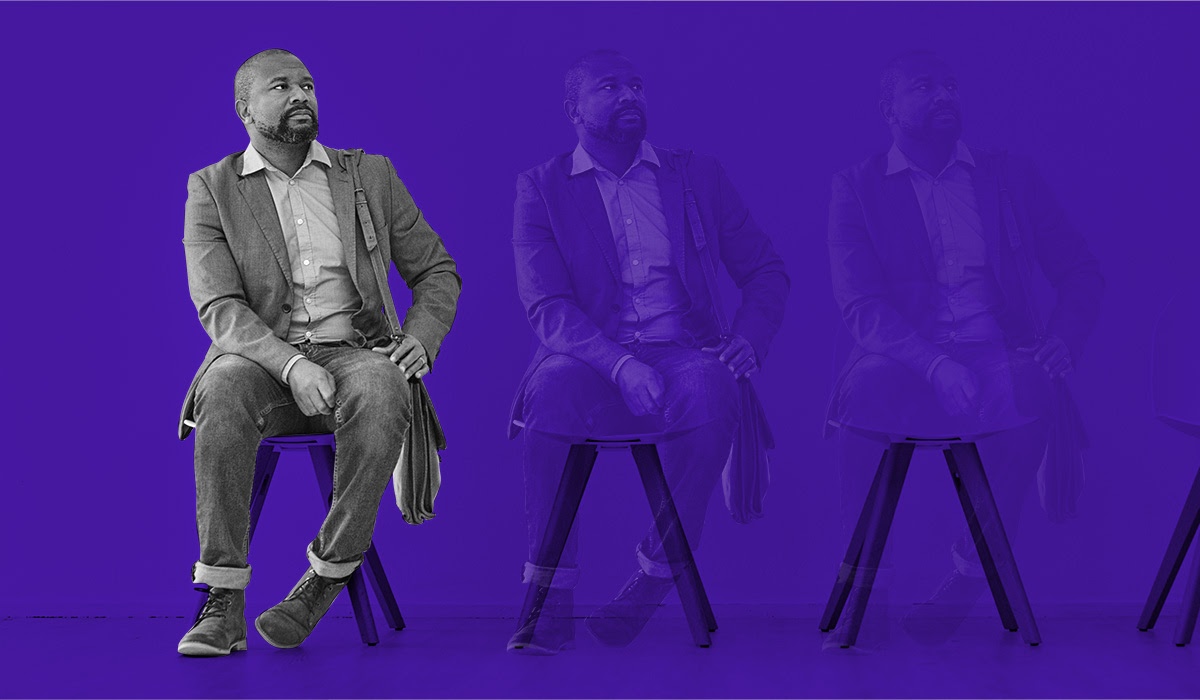PEOPLE ANALYTICS
Predictive Analytics: Definition, Techniques, and Examples
Predictive analytics turns your historical data into insights and forecasts about future events. Be better prepared, no matter what direction you take in your business, and create a strong workforce ready for the future of work.
Get a Demo
Table of contents
What is predictive analytics?What is predictive analytics in HR?What are the benefits of predictive analytics? 4 predictive analytics techniques4 examples of predictive analytics in HRPredictive analytics starts with the right technologyWhat is predictive analytics?
Predictive analytics uses historical data, along with machine learning techniques, statistical modeling, and data mining to make predictions about future outcomes. It can be used in any field, including finance and banking, human resources, and marketing.
With predictive analytics, you can identify strengths in your current programs and operations, and opportunities for growth. You can also see problem areas in your sector and find solutions to avoid them ahead of time, though this is not its primary application. The focus is always on gaining a better perspective on what might happen in the future based on past data.
What is predictive analytics in HR?
Predictive HR analytics is a branch of predictive analytics that is used to analyze data related to the workforce. Its goal is to look at past data to gain insights into the future.
Companies can use predictive HR analytics to understand and make predictions about things like turnover rates, engagement, absenteeism, talent acquisition, and more.
Don’t confuse predictive analytics with HR analytics, though. The goal of HR analytics is to help you understand your data—what is working, what isn’t, and how you can improve. Predictive HR analytics does this too, but its primary goal is helping you see what could happen in the future and how data can evolve.

What are the benefits of predictive analytics?
Predictive analytics can help businesses thrive through stronger, informed decisions. Here are some of its key benefits.
1. Improved decision-making
Predictive analytics shows you insights into what might happen in the future. That means your decision-making process is significantly smoother, and you gain a clear picture of the possibilities and risks of certain actions and decisions. You’re no longer deciding based on a guess. Instead, you’re using data to guide you in the right direction.
2. Risk management
Any business and any decision you make comes with risks that can feel 10 times worse if you don’t see them coming. Predictive analytics shows you insights into possible risks so you’re never caught off guard. You can then develop strategies to mitigate those risks, prioritize the most severe ones, and be better prepared.
3. Customer insights and personalization
Customers are crucial for a company’s success, but attracting the right people may feel challenging. Predictive analytics can offer valuable insights into your customers’ behavior and their preferences. That way, you can create targeted, personalized campaigns that will attract the right people each time.
4. Talent management
Employees are essential to your success and talent management techniques help you increase engagement, satisfaction, retention, and performance. By using predictive analytics, you gain insights into future workforce trends, such as turnover or performance drops. All this will help you increase your retention rates and even improve your talent acquisition process.

4 predictive analytics techniques
There’s no one set way to work with predictive analytics. You have several techniques to choose from, each with its own advantages and uses.
1. Regression model
Regression algorithms are most often used when you want to predict a numerical value. For instance, you may want to figure out how long a potential customer will take to purchase something from the moment they first come to your site. You could also look at the relationship between the time someone spends on the site and the number of purchases they make.
In all cases, you’re usually looking at the relationship between two or more variables, trying to understand how they influence each other and how this will affect future outcomes.
2. Decision tree
A decision tree is a visual chart that you can use to improve your decision-making process. From your starting point, the tree branches will take you through narrower and narrower options, until you can reach the final decision.
Decision trees are not exclusive to predictive analytics, but they can be used in this area to solve complex problems. A great example is using this technique for customer segmentation. You collect various data on your customer that could be relevant to your campaign.
With this data, you can create general segments based on parameters details, like age, gender, or location. You can then segment your audience using a decision tree to create specific rules for a successful marketing campaign.
3. Neural networks
Neural networks draw inspiration from biology and use past and present data to make predictions. Their unique design makes them the perfect tool for finding answers that might otherwise be lost, or buried among other information.
A great example is fraud detection in online banking. Fraud attempts can have complex patterns and anomalies that traditional models may not detect.
With a neural network, you work with multiple layers. The first layer will be the one taking input. The second layer, often hidden, is the one for calculations, while the output layer will offer the prediction.
4. Classification model
Classification models are techniques you’ll use when you want to sort data into different categories. As an example, if working with an online store, you can have “customers”, “subscribers”, or “browsers”. Subscribers can also be divided into their own categories, such as “weekly”, “monthly”, or “yearly”.
With a classification model, you can then predict the likelihood of someone becoming a “customer” or a “subscriber” based on different data or behavior patterns.
You can also use this technique inside the company within your human resources department, to create a more efficient talent management system and more.
4 examples of predictive analytics in HR
Predictive HR analytics can help you improve your talent management process by assisting in various areas. Here are four common use cases.

1. Predicting employee attrition
High attrition rates are one of a company’s worst nightmares. When the wave of resignations catches you by surprise, it’s even worse. Predictive analytics helps you create models that will allow you to forecast when employees are most likely to quit.
Plus, it can uncover patterns that will show you which employees are most likely to quit. All this can help you be better prepared for when the resignation wave happens. It can also assist you in lowering voluntary attrition rates and retaining top talent.
2. Predict performance for departments and individual employees
You can use predictive analytics to look at historical data related to performance and individual characteristics. This can show you which employees are more likely to become top performers. This will also uncover patterns that can help you improve performance in the future, guiding employees to become better at what they do.
3. Find the most suitable candidates for promotion
Succession planning is an essential part of any company’s success as it increases engagement, satisfaction, productivity, and performance. But identifying the best candidates to take on important leadership roles can be challenging.
With predictive HR analytics, you can analyze data on people’s skills, experiences, and career trajectories until the present moment. This will help you forecast who possesses the necessary abilities and the willingness to take on a bigger role within the company.
4. Strategic workforce planning
People come and go, and skill needs change all the time. Workforce planning helps you minimize skill gaps, improve hiring, and keep employees satisfied.
With predictive analytics, you can improve this process and forecast with more accuracy your future talent needs. This helps you create a strategic workforce planning strategy, ensuring you’ll always have the right people at the right time.

Predictive analytics starts with the right technology
Predictive analytics may sound complicated at first, but it becomes a lot easier with the right tools. It all starts with people—your employees. People analytics gives you a unified perspective on your data, helping you select the information that matters, make accurate predictions on your future workforce, and more.
With that knowledge in hand, you can tackle workforce planning to create data-driven plans that will improve talent retention, engagement, and productivity. Understand your talent acquisition process and forecast who are most likely to be the best candidates, who will thrive and become top performers, and more.
Last, but not least, use analytics to your advantage and become a skills-based organization. Incomplete or, on the contrary, data that is too complex is often an obstacle for companies who want to put more emphasis on skills.
Predictive analytics helps you look at the data that matters and understand the skills you have and those you’ll need. Prioritizing employee skills and knowledge leads to effortless improvement in performance and engagement.


